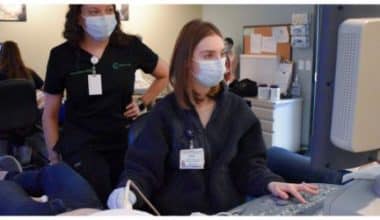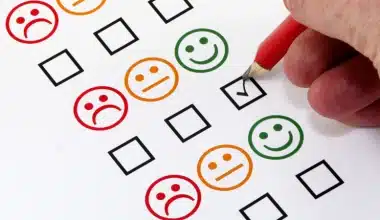Starting a new career is exciting, but getting your foot in the door can be difficult. If you’re concerned that candidates with more experience will overshadow your application, don’t underestimate the importance of a well-written resume in the hiring process. Even if you lack the work experience or sample that an employer seeks, your career change resume can effectively convey why you’d be a good fit for the position. In this guide, we explain what a career change resume is, how to write one, its objective and some example to work with.
What is a Career Change Resume?
Changing careers and attempting something completely new can expose you to new opportunities, teach you new skills, and even earn you more money. However, it is not always simple, especially if you want to move into a completely different field. Aside from conducting research and identifying opportunities, there is one critical step you must take before making the leap: updating your resume.
A smart resume is essential for demonstrating to a potential employer why you want to make a change, what you bring to the table that will benefit their team and the company, and what this change means to you. Writing a resume that highlights your professional history will also help you be a better candidate.
How to Write a Resume for a Career Change
A career pivot entails starting from scratch. You must persuade recruiters and hiring managers that you have what it takes to do the new job well. And one way to demonstrate your worth to recruiters is to create an attention-grabbing career change resume. Here’s how to write a career change resume.
#1. Choose the Best Resume Format for Career Change
Because it allows you to prioritize relevant and transferable skills over experience, the combination resume format is ideal for changing careers. This addresses the main issue with changing careers: you don’t yet have much, if any, traditional employment experience in the new field.
This resume is a hybrid of the functional and chronological resume formats, emphasizing skills and achievements first, followed by chronological work experience.
If you’re changing careers, the combination format is advantageous because it shifts the focus away from work experience and toward the skills you’ve developed, even if they were developed in a different industry, through ongoing education, internships, or volunteer work.
Consider including the following sections in this order on your combination resume:
- Contact information
- Resume summary/objective
- Skills summary
- Courses/certifications (if applicable to the new job)
- Work experience
- Education
#2. Include a skill summary
If you’re in the process of changing careers, make your skills stand out on your resume. Indeed, we recommend putting them ahead of your work experience.
List a few skills you want to highlight in the skills summary section, and add bullet points underneath each skill that provide examples of when you’ve used this skill.
Don’t know what skills to include in this section? Scan the job description for the position you’re applying for and start with some of the required skills. Some soft skills, such as leadership, are transferable to almost any job. Using some of the same keywords as the job description can help your resume pass through automatic review filters.
In some cases, you may want to create a separate section for “Technical Skills,” where you can briefly list your proficiency with various industry tools or software. This is a great way to capture additional keywords from the job description without having to list specific instances when you’ve used each tool.
#3. Include a resume summary or objective
An objective is useful in your career change resume because it summarizes your skills and experience quickly, saving time for an employer who may be reviewing multiple resumes at the same time. The objective or summary section should appear immediately below your contact information.
This section should include skills and qualifications that are relevant to the new career you want to pursue. In this section, be brief but specific about these abilities. In the skills section, you will have the opportunity to go over them in greater detail.
Career Change Resume Objective—Example
Most resume objectives simply demonstrate enthusiasm. You can’t stop there as a career changer, or you’ll lose the hiring manager. You have a lot of passion, but you’re up against candidates with real experience. They might be passionate as well! Show your accomplishments and career goals, as in the following career change resume objective sample for a new software developer:
“Results-driven software developer seeking to use proven Python and Ruby skills to deliver coding excellence to Cryptoconic, Inc. Have developed three webapps and five mobile apps, contributed to seven GitHub projects, and debugged seventeen apps. Wrote back-end code for forty operational business websites.”
#4. Revise your professional experience
The best way to update your employment section is to include brief bullet points for each entry that highlight transferable skills relevant to your new career. Changing the emphasis from your job duties to the skills you’ve used in your career will allow you to get the most out of your employment section by emphasizing skills that an employer in your new field would find appealing.
Assume a teacher wants to change careers and apply for a data associate position working on a voice-operated human interface device for a large corporation. This would be a completely new work environment, and the job would be more technologically focused than the teacher is accustomed to.
However, because the position is centered on a voice-activated device, the job description specifies strong grammar and communication skills as ideal qualifications. With this in mind, the teacher could revise her resume and, rather than focusing on the academic aspects of teaching, she could concentrate on the communication skills required for teaching, such as effective written and verbal communication.
#5. Highlight your education (Including certificates)
Whether or not your education is directly related to the job you’re applying for, this section of your resume should still be included. If you have little professional experience, you can supplement your resume with information about your academic achievements, such as your GPA or relevant coursework.
Assume you have an undergraduate degree in history and are applying for a position as a business analyst. Make sure to mention any business or analytics courses you took in college. They may not have been part of your degree, but they demonstrate that you have a continuing interest in understanding how businesses work.
Make a note of any certificates you’ve obtained outside of a degree program. Online programs and certificates allow you to broaden your knowledge in a specific subject without committing to a full degree program. They can demonstrate to employers that you are serious about your professional development and want to gain more experience in a specific industry.
#6. Showcase relevant certifications or courses
If you have a certificate or have taken courses to develop skills relevant to your new career, highlight them prominently on your resume. This will demonstrate to employers that, while you may not have hands-on experience in the field you’re interested in, you’ve taken steps to learn the fundamentals or become certified. You can have a separate section for certifications or courses, or you can include them in your skills section.
#7. Include projects
A section of your resume dedicated to projects and accomplishments isn’t always necessary, but if you’re changing careers or don’t have much work experience, this can be a valuable way to round out your resume. You can use this section to highlight any personal accomplishments that are not directly related to work or school, such as personal projects, volunteer work, or membership in industry-related clubs or organizations. If you include a section for projects or accomplishments, make sure that everything you list is related to a key skill or characteristic relevant to your desired career path.
Career Change Resume Example
Now that we’ve covered some tips for creating a resume tailored to a career change, let’s explore a practical objective example of this career change resume so you will understand what you need to do in details. This career change example is stated below:
Name and Contact Details
- Mrs. Abigail Jacobs
- Philadelphia, Pennsylvania
- 267-555-0176 | [email protected]
- linkedin.com/in/abigail-jacobs-example
Objective
Professional with a strong work ethic and a track record of increasing customer satisfaction. Transitioning into the digital marketing space will allow me to use my problem-solving skills and build on my 3+ years of customer service experience.
Professional Skills
Problem Solving :
- At Platinum Auto Insurance and Accelerate Call Center, I created innovative solutions for dissatisfied customers.
- Lead team brainstorming sessions to improve customer satisfaction metrics.
Communication :
- 3+ years of experience in customer service roles, including frequent phone and email communication with customers
- I earned a B.A. While in college, I majored in Communications and was a member of the Public Speaking Club.
Organization :
- Used Excel to organize and track customer service metrics, and compiled these metrics into weekly reports for management
Technical Skills
- Microsoft Word
- Excel
- Google Suite
- WordPress
- Google Analytics
- Google Search Console
- Zendesk
Work Experience
Senior Customer Service Advisor :
Platinum Auto Insurance | Sept 2019 – Present
- Over 100 customer complaints were resolved each week, and customers were contacted by phone and email.
- KPIs were tracked for each ticket, and weekly customer satisfaction reports were delivered to management, consistently exceeding target satisfaction ratings by 5-10%.
- I worked with team members to come up with creative solutions for customers.
Customer Service Representative :
Accelerate Call Center | Jul 2018 – Sept 2019
- Responded to 50+ calls per day, answering customer questions and directing them to other departments as needed.
- By revamping customer service phone scripts, I demonstrated written communication skills, resulting in a 20% increase in customer satisfaction ratings.
Education
Bachelor of Arts in Communication :
University of Pennsylvania | Jun 2018
- 3.75 GPA
- Completed courses in advertising and social media
Certificate in Digital Marketing:
Wharton Online | Mar 2022
- I finished a six-week program at The Wharton School.
- I learned about marketing analytics, customer relationships, social media marketing, and e-commerce marketing.
Personal Projects
Marketing Assistant for Public Speaking Club :
2017 – 2018
- As a member of the University of Pennsylvania’s Public Speaking Club, I assisted in the creation of a monthly newsletter.
- Managed the club’s social media accounts, posting content on a regular basis and engaging with followers.
Marketing Consultant :
2020 – Present
- I helped a friend create and manage a photography business website.
- Google Analytics and Google Search Console were used to assess the performance of website content.
What is a Good Objective for a Resume for Career Change?
A career change resume objective bridges the gap between your previous and new roles, for example, a good objective would clearly and succinctly describe your relevant experience and how it will help you succeed in your new career.
This is an example of a good objective for a resume for career change of an accountant seeking a sales position. He/she might write:
“Certified Public Accountant with ten years of experience writing accurate and timely financial reports, reducing costs, and improving overall efficiency; looking to apply my analytical skills and attention to detail in developing sales systems that will streamline all sales processes and increase profitability.”
How do you Write a Resume Summary when Changing a Career?
If you want to learn how to write a career change resume summary, then focus on demonstrating to recruiters and hiring managers what you bring to the table, even if you are changing careers.
How do you put Transferable Skills on a Resume?
Transferable skills are important when changing careers because they demonstrate to recruiters, hiring managers, and potential employers that you have the skills required for the new job position. To include on your career change resume:
- Put them in your resume summary or objective.
- Fill out your work experience section with skills.
- In your skills summary section, clearly write transferable skills.
Conclusion
To summarize, going through a mid-career transition may appear intimidating. However, if you tailor your career change resume to emphasize transferable skills and experience, you’ll be fine! Simply make sure to follow the main key points we’ve listed above when working on your resume.
- HOW TO GET A JOB: Top Proven Steps to Take & Free Tips[Updated 2023]
- WHAT IS A RESUME FOR A JOB: What It Should Look Like & How to Write It
- What to Put on a Resume: 10+ Free Tips to Include in a Good Resume
- HOW TO MAKE A GOOD RESUME: Tips on Writing an Effective Resume
- 53+ Hard Skills And How To Highlight Them On A Resume
- TAYLORMADE LOGO: Meaning, History, Font & All You Need to Know






